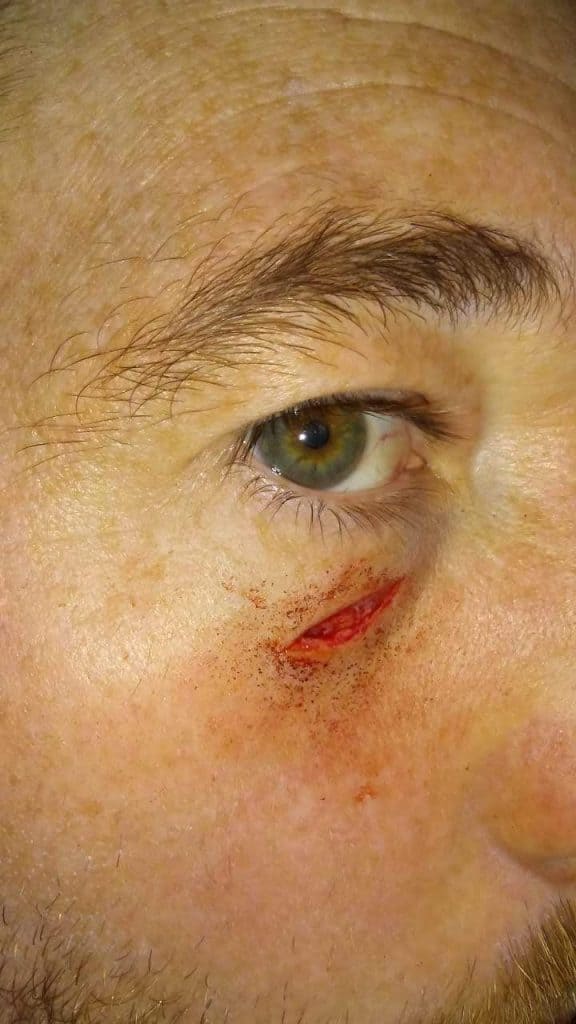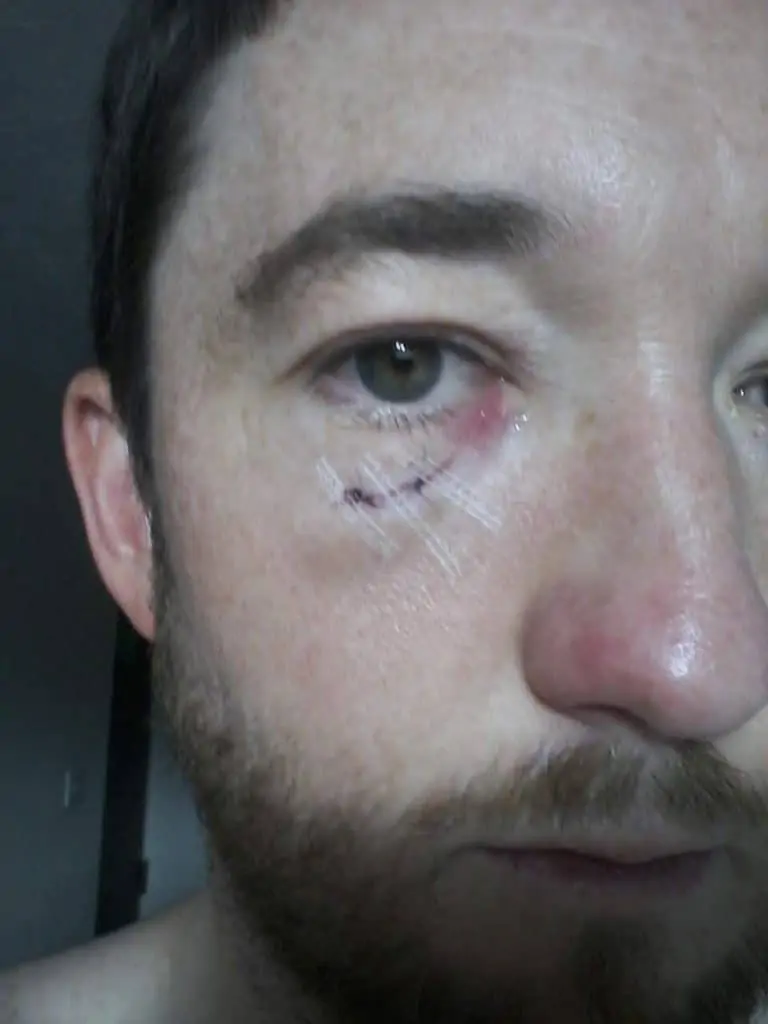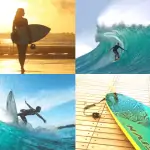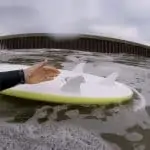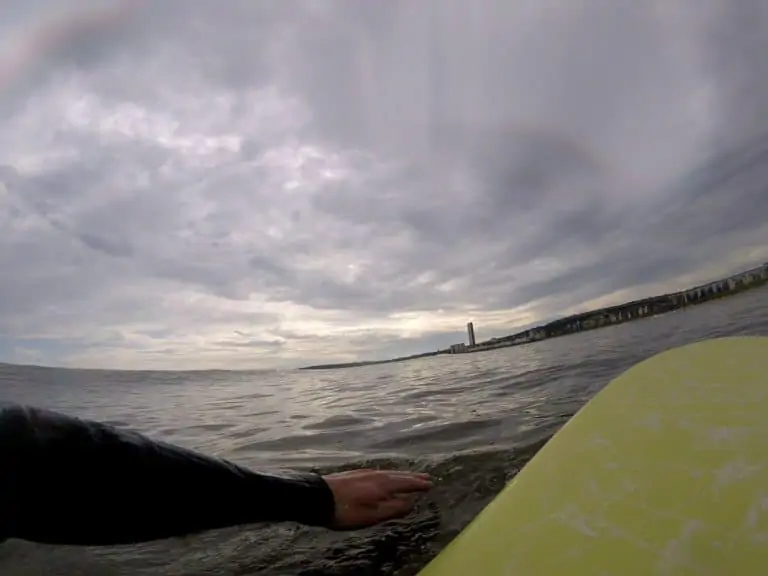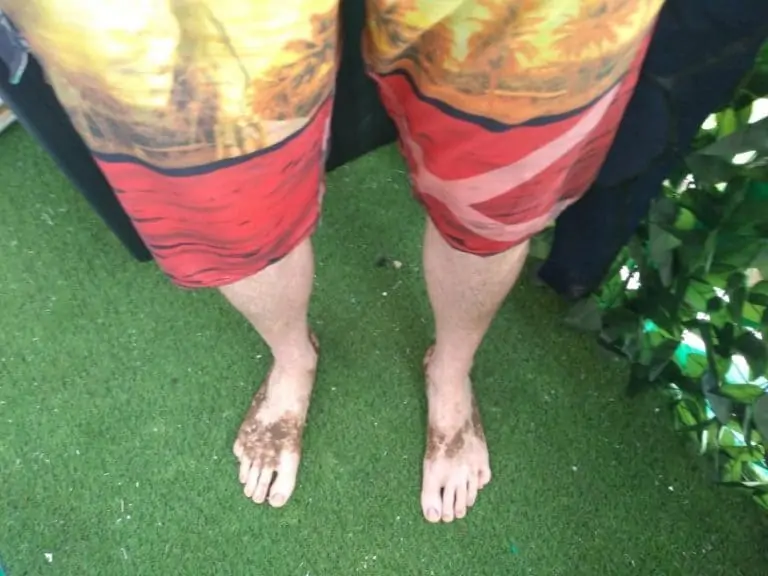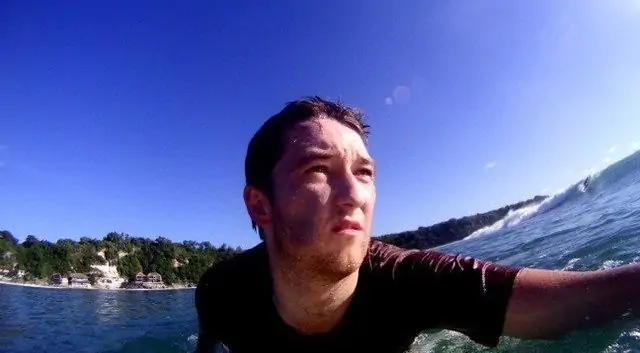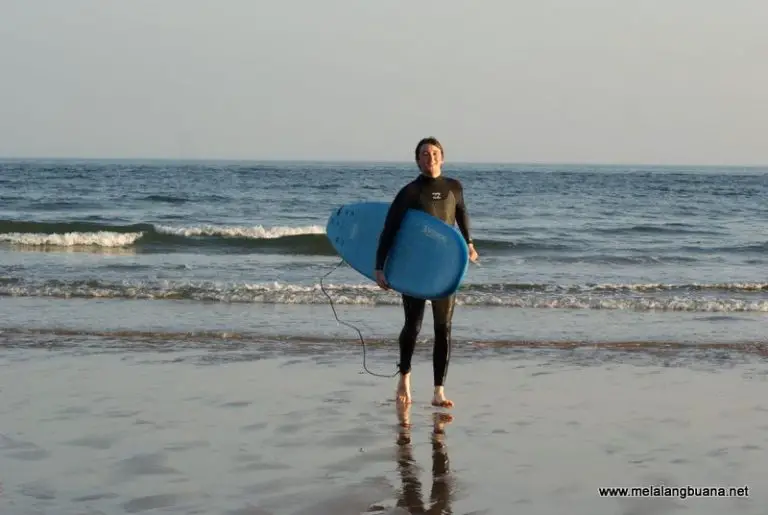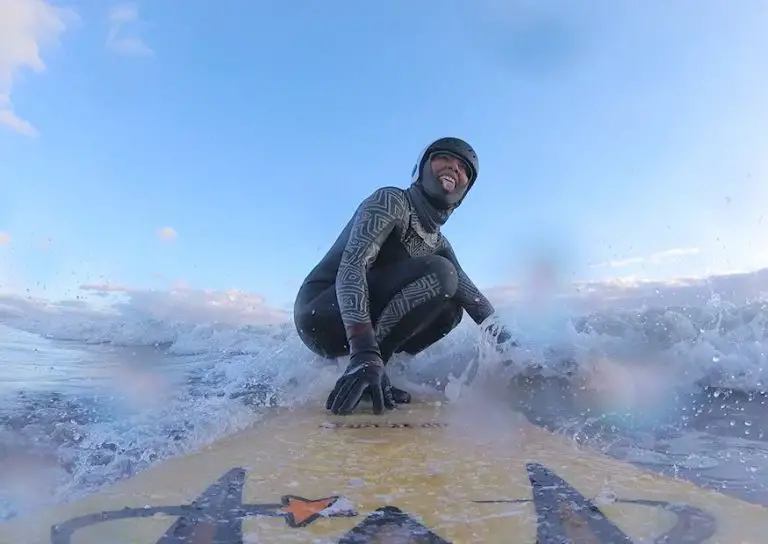Surf Safety: Equipment and Tips for Safer Surfing
Surfing is no doubt a sport that has its dangers. Some people class it as an extreme sport but, in reality, learning to surf is usually far less extreme than what many people think.
However, like any activity, surfing the potential for injury or harm so it’s important to think about the different ways to minimise the risk.
With that in mind, below are 10 items of surf safety equipment to help you stay safe and have fun out in the surf:
- Surfboard leash
- Foam soft-top surfboard
- Surf helmet
- Nose guard
- Ear plugs
- Powerful sunscreen
- Reef boots
- Soft fins
- Safety whistle
- Zebra print gear (more on this below!)
So, these are all good items to help you surf safely, but a few will need a little more explanation to make sure you get exactly, as we’ll look at below. We’ll also cover lots of surf safety tips at the end of the article – so let’s get to it!
Surfboard leash
The leash is the absolute essential item of surf safety for all in the water. This piece of equipment connects you to your surfboard and makes surfing much safer for you and others as a result.
A surf leash has a Velcro strap attachment that wraps around the ankle or, for longboards, you can also get calf leashes that go higher up to allow for walking up and down the board without tripping over.
This leg attachment then connects with a polyurethane cord that fixes into a leash plug on the deck of your surfboard.
You simply need to fix your leash to the board the first time and you can leave it. Then, for each surf, wrap the Velcro strap around your leg and you are good to go.
Wearing a leash will mean that you don’t need to swim in to shore after every fall (which happens a lot). This also keeps your board close by so, if you fall off at any point, you can simply pull the board back to you using the leash, always keeping a float in the form of your board at hand at all times.
Being connected to a leash also means that your board won’t be washing in to shore in the whitewater after you fall, which is a hazard to other surfers in the water as surfboards can hit people hard just with their own weight, let alone with the force of a wave behind.
In short, a leash makes surfing safer for you in that you are always connected to your and for others in that your board won’t be washing in to shore each and every time you fall.
However, please remember that a surf leash in itself should be used along with good judgement and common sense; a surfboard that is connected to your leg can still hit you or others with a strong force and do serious damage. As such, check out the bonus tips at the end of this article for more pointers how how
Tips for Getting a Leash
Avoid getting a ‘comp’ leash (short for ‘competition’); these leashes are lightweight for pro surfers since a leash drags a little in the water, but this is only really noticeable for advanced surfers and comp leashes will break much more easily, so it’s likely a waste of money for most other surfers.
Usually, a surf leash that is the same length as your surfboard is the right size, but if you are going longboard, you could add on an extra foot if you feel that it would help. The problem with getting a leash that is too short is that it will rebound at you, so go longer rather than shorter.
If you are going surfing a lot, also look for signs of wear and tear in your leash. Most surfboard leashes should last several years but, if you are surfing in places with extremely powerful waves like Hawai’i’ or Indonesia, then look to change your leash more frequently.
This tip comes from experience since, when I lived in Bali for nearly 3 years, my surfboard leash would break almost every 6 months without fail. This led to a few scary situations so there’s something for you to avoid!
You will find that the Velcro will start to wear out after a few years while the cord on the leash itself can also break without warning; check the length of your leash.
Check my ultimate surf leash guide for more tips on this now!
I should add here that you will never know exactly when it’s time for a new one so just keep an eye on it and stay safe in the surf.
Foam Soft-top Surfboard
This one is mainly for beginners since foam soft-top surfboards are the exact kind of boards that surf schools the world over use.
The reason is in the name: the soft foam used to make these kinds of boards means that they are much more forgiving on your body and, if you fall or have a collision, on that of other surfers, too.
As learning to surf involves a lot of falling, foam soft-top surfboards are the best choice for beginners for their added safety.
From my own experience, I really like these kinds of boards, even after surfing for 20 years, since they are just so much fun.
They float really well, making them easy to paddle and also the soft construction makes them a softer landing if you fall badly, so are just an all-round great type of board with genuine safety credentials.
You will also find that most surfboards with this construction are designed for learner surfers, meaning that they usually have a good shape and size for beginners, as we’ll look at below.
They’ll also help to prevent any rib pain you might experience from surfing, which can happen, as explained in my post above!
Tips for Choosing a Foam Soft-top Surfboard
The main points here are to get a board that is big enough for you and that is designed for learners of your height and weight.
Generally, a board that is 2 feet longer than you are tall is the right size for learning on, provided that it has a wide template that has a rounded nose and tail.
You can check the weight guidelines on the product description of (most) surfboards available online to be sure that you are getting the size.
For much more on this very broad topic, check out my must-read guide to choosing the right beginner surfboard for you or a friend, including sizing, shape and more.
Surf Helmet
A surf helmet is a fantastic addition for adding a huge amount of protection to the most sensitive part of your body when out in the surf.
Since many surfers will crowd into the best part of a beach for waves, this can also increase the chance of collisions and impacts with other surfboards.
If you are in the way of another surfer, and even if they jump off their board, you can still easily get hit on the head when their board is thrashing around in the whitewater or simply hurtling towards you across the surface of the water.
Although you don’t see many surfers wearing a helmet, they probably should. Surfing head injuries definitely do happen and when they do, they can be very serious.
There have been several high-profile head injuries among professional surfers in recent years, including Jeremy Flores and Evan Geiselman, admittedly at extremely dangerous surf spots.
From my own surfing experience, I can say that I know two local surfers who have suffered life-threatening head injuries; one of whom still has limited mobility to this day, 20 years later. Neither were in particularly dangerous locations or waves, they were just unfortunate. Although accidents of this kind are rare, it still seems crazy to me that more surfers are not wearing helmets, especially since the benefits are massive with little downside.
Tips on Getting a Surf Safety Helmet
There are a couple of kinds of surf helmet on the market but I would recommend using the soft surf helmets that are produced and sold by Decathlon.
These were developed with a doctor to prevent head injuries in the surf and are not only affordable but also comfortable.
The other mainy type of surf helmet is made by Gath; I have one of these surf helmets and, although it is extremely well-made and durable, I am not a fan given that it is simply too uncomfortable for me. Gath helmets are also a lot more expensive, being 2-3 times more expensive than the soft surf helmet listed above.

Nose guard
You can also add a guard to the nose of your board to soften the impact. Although these are more for saving the nose of your surfboard from cracks or dings, they will also make it a softer edge and therefore less painful if it hits you.
Please note that these kinds of guards are only suitable for hard (fiberglass or epoxy) surfboards, so skip this part if you are using a soft foam surfboard, as recommended above.
These are another item that are not that common but probably should be more widely used. I’ve added a nose guard (also called a ‘nose cone’) to several of my surfboards over the years due to frustrations with them cracking, but always liked the softer edge that this kind of equipment gives a surfboard.
The instructions that you get with a surfboard nose guard tell you exactly how to apply the glue; this usually also involves leaving it for 24 hours before surfing.
These nose guards seem to be harder to find these days but they are still around online, with companies like SurfCo Hawaii and Ocean and Earth still producing and selling them.
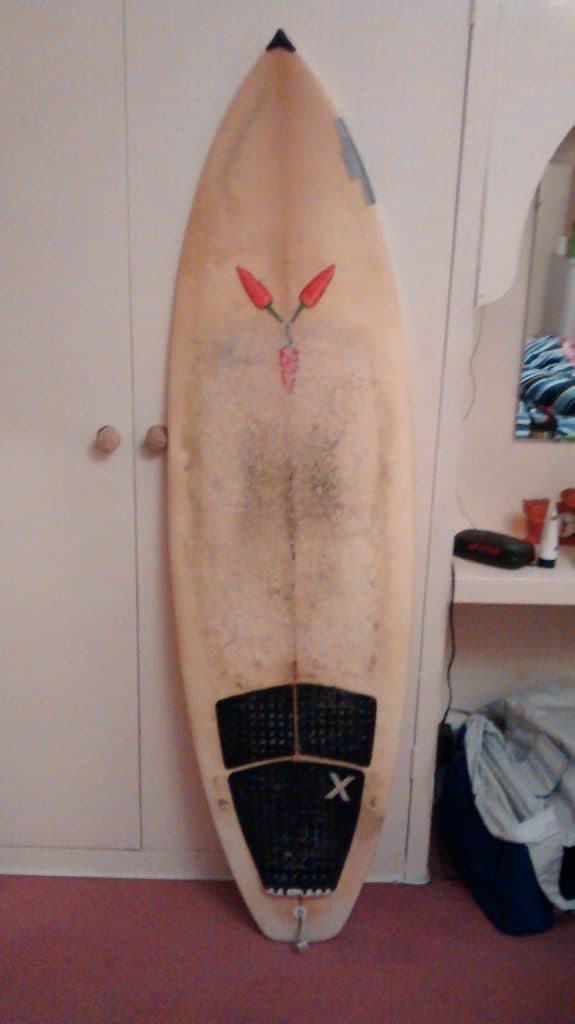
Tail guard too
To go with a nose guard, you might also like to get a tail guard as, despite being much less used or common, they can do the same thing for the tail of your board.
In fact, the worse surfing injury that I’ve suffered came from an impact with the tail of a longboard I was riding; having this kind of guard in place might have stopped me from having to get stitches below my eye and sitting out of the surf for several weeks.
Ear Plugs
So, moving away from the focus on collisions and impacts above, it’s time to think about surf safety equipment for short and long term, namely ear plugs.
You may not know but surfing regularly eventually leads to what is called surfer’s ear or ‘exostosis’. This is where bony growths start to form in your ear canal as your body attempts to adapt by blocking out the cold water coming in, which it perceives as a problem.
However, the growths can cause blockages, an overproduction of earwax and mild pain and discomfort, as well as hearing issues.
Fortunately, wearing ear plugs in the surf can almost guarantee that you will not get surfer’s ear since they will protect your ears from the sudden flushes of water and therefore stop your body from reacting with bony growths.
Wearing ear plugs can also reduce the chances of getting an ear infection since they will greatly reduce the amount of water going into your ears, so an added bonus there, too.
Tips for Buying Ear Plugs for Surfing
Having tried several types of ear plug, I would recommend going to your local hearing specialist and seeing if they do custom ear plugs, or ‘ear moulds’ as they call them here.
This is because I found that the two other types of ear plugs I tried, the ear putty ones and Doc’s Pro Plugs, just did not work for me.
The ear putty moulds were so hard and difficult to shape that I could not get them to fit my ears properly, and even then they were still letting water in.
As for Doc’s Pro Plugs, although I liked the cord that attached them together and how light and easy they were to fit, their pre-moulded shape only fitted one of my ears, leaving my left ear with a loose fitting plug that still let lots of water in.
In this case, although going for a custom-molded set of earplugs might be the most expensive, it will also be the option since they will fit perfectly and be the most comfortable, so the extra spend will be worth it.

Powerful Sunscreen
This one might seem obvious but it’s only after you’ve surfed several times that you might come to realise just how strong the sun’s rays can be when you are out in the surf.
Just like doing winter sports in snow, watersports like surfing lead to intense exposure to the sun without you really being aware of it.
If you want to surf for many years, then you may well also want to think about the long-term effects of sun exposure on your skin. Not only does intense sun exposure leave skin looking old and leathery, it also increases the risk of skin cancer dramatically, so it’s not something to be laughed at.
Tips for Sunscreen for Surfing
Zinc oxide or organic products are the best sunscreen choices for surfing. I have used different products made from each that offered good protection.
If looking for zinc oxide sunscreen, you can get this in a range of wild colors to add some fun to your session as well as the safety of being protected from sunburn and exposure. There are so many online but searching for ‘zinc sunscreen surf’ on Amazon will give you the best range of options and prices.
When I was living in Bali, there was a local product called ‘Surf Yogis’ made from various oils that had a great smell and was completely organic. In fact, from a quick check on their website, their all-natural surf sunscreen is “made with nothing but natural and clean ingredients- chocolate, coffee, vanilla, beeswax, zinc oxide, coconut oil, peace and love!”. A pretty good option if you are in Indonesia or looking to buy online.
Reef Boots
Again, these are specific for those of you who are going to surf over rocks, reef or if you have a tricky walk out into the surf.
Reef boots are thin surfing booties that will protect your feet from sharp rocks, barnacles, shellfish and sea urchins.
You can cut and slice your feet when out in the surf without these, so they definitely come in handy if you are surfing over a reef.
I’ve also had the misfortune of stepping on several sea urchins over the years and, in short, it hurt like hell! I’ve also stepped on sea urchins when out surfing with reef boots on and they worked pretty well.
Reef boots are also much easier to use and wear than winter surfing booties given how light and thin they are.
Tips on Buying Reef Boots
If you think that you need reef booties for your surf spots, then make sure they have the following:
- Strap across the top
- Drawstring cord around the leg
- Split toe design for a better feel
If you get booties with all of the above, you should indeed have no issues as they will be good quality and protect your feet well.
My Experience of Reef Booties
In terms of brands, I have had 4 kinds of reef booties over the years with varying styles and success. The first pair were by Billabong but I got them a size too big. This meant that, once wet, they were literally hanging off my feet. Unsurprisingly, I lost these in the surf when a wave washed them off, so a lesson learned there. After that, I got myself some O’Neill reef booties which had the best traction out of all the ones that I’ve had. These were great and a much better fit but, after several months of surfing with these out in Bali, they came off on yet another duck dive out in fairly powerful surf. From there, I got myself some FCS reef booties that were at least one size too small and were great until they got stolen from my motorbike compartment in Bali! Currently, I have a pair of Xcel reef booties that have all the usual reef booty credentials but I have not used them all that much although they seem great so far.
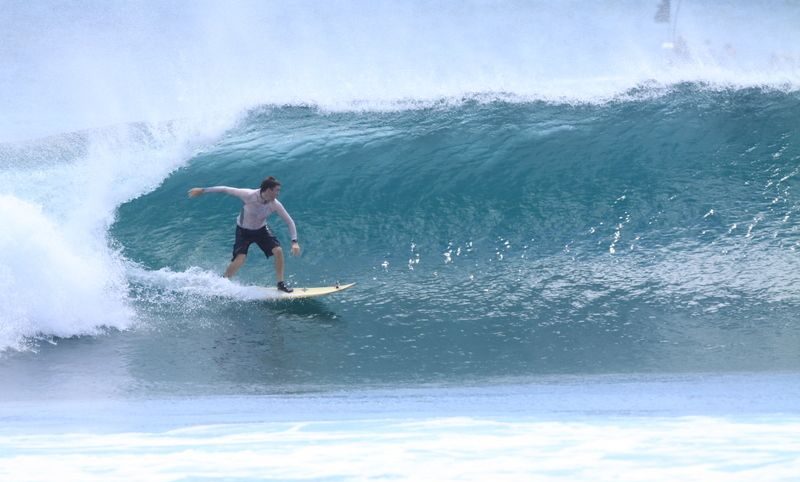
Soft Fins
These are one of the rarest items on the list but can help you to add a few more ‘soft edges’ to your surfboard, making it again that bit safer.
Since surfboard fins can be seriously sharp and stick out from the bottom of a board, they can often be involved in many collisions and accidents. One common nightmare surfing accident is when someone riding a wave ‘runs over’ another surfer who is paddling out. The fins colliding with another surfer while someone is riding a wave at speed can have a tremendous force behind them, causing anything from dead legs to broken bones.
It’s also very possible to land on your own surfboard fins when wiping out. The board can flip over and go in all directions, with the fins being probably the most painful part to land on.
As such, adding fins with soft edges can reduce the damage done here to yourself and others without losing any performance.
Tips for Getting Soft Fins
The soft fins I am talking about are made by SurfCo Hawaii, specifically their Super Flex Proteck fins with soft edges. In fact, just looking on their site, there is a review from a surfer who sliced his foot on his fins stating how good they are, so it instantly gives you the idea of why to use them.
The softer edges have no noticeable impact on performance but give you a lot of peace of mind out in the surf.
Before buying any surfboard fins, be sure to check that they fit the kind of fins that are suited for the fins on your board. The main fin types are FCS and Futures, so have a look at what your current fins are and what the manufacturer says on their website.
There are currently no other safety surf fins available so I can only suggest looking at the Proteck ones above without anything else to compare them to!
Safety Whistle
So, this is not one that I’ve seen surfers using but it seems like a good idea for added peace of mind and safety to attach a simple whistle to a loop on your wetsuit.
This could be a real help if you are out on a misty or foggy day when there is a current running, or if you find yourself injured in any way after falling off your surfboard.
A simple few blows of this whistle could quickly and easily alert others around you to give you assistance.
To give you a specific recommendation, the simple Storm Safety Whistle (over on Amazon; affiliate link) claims to be the loudest whistle in the world and is also fully functional both when wet and when submerged in water.
The whistle is designed to be held with a gloved hand (good for surfing in cold water) and is small enough that you could attach to the loop on a chest zip wetsuit without it getting in the way while also being on hand if you need it.
Storm Whistles offer both their standard whistle and the smaller ‘Wind Storm’ whistle which is the smaller of the two, yet both are designed to produce the same volume, although the standard Storm whistle looks like it would be easier to hold with wetsuit gloves on.
You can see an example of this video being used in a diving context in the video below:
Zebra Print Gear
OK, so this is a bit of a long shot but it can help surfer’s who are surfing regularly in shark infested waters.
This is because zebra prints or patterns have been shown to have something of a deterrent effect on sharks.
Although this is not guaranteed to prevent a shark attack, it seems like it’s probably worth a try given that it could do something without any negative effect on you or your surfing, other than perhaps raise a few eyebrows of other beachgoers.
The evidence suggests that a black and white striped pattern or bands can trigger something of a reflex response in sharks to stop them attacking a person at the last second. This is because these stripes mirror certain species of fish like the pilot fish or remora fish that keep sharks free from parasites.
So, to put this into action for safer surfing in shark-infested waters, there are a couple of things that you can do here.
You can look into surfboards that already have these patterns on them. Specifically, Rock-it soft foam surfboards all come with a zebra-like pattern on the bottom of the board for this reason. Not only are these boards great for learning to surf on but they also might reduce your chances of getting attacked by a shark – double win!
You can also get a shark deterrent zebra-like print decal for the bottom of your surfboard from the shark deterrent surf range by Radiator Wetsuits of Australia.
Shark Eyes
As a slight deviation from the zebra pattern, you could also look into getting some ‘Shark Eyes’ gear from their official site. Again, be sure to read up on the claims made there before you decide on whether these will help you in your chosen surf area.
Bonus Tips for Safer Surfing
So, along with equipment suggestions, below are some key tips for a safer surfing experience to again make sure that you have fun and stay safe when heading out into the waves.
Go With Friends
Going surfing alone doesn’t seem that risky or indeed dangerous but, given that you will be out in the sea with all its unpredictable moments, it’s always a good idea to go surfing with friends.
You might be at spots with lots of people so that might make up for not actually meeting any of your friends but just make sure that you are always close to others.
It only takes one awkward fall, a strong current, a rogue wave to break your leash or even a gust of wind to really put you in danger at a moment’s notice so failing to take all the necessary precautions is only putting yourself at risk.
Having had a few scary experiences over the years, I can say that I’ve been saved on two occasions by others and had they not been there, I’m not sure what might have happened.
It’s nice to go for a solo surf but it’s also nice to have others around for peace of mind and safety. Try to weigh this up next time you are heading out for a quiet session and be sure you are aware of all the risks.
Fitness
Keeping a reasonable level of physical fitness is a must for surfing since it’s a tiring and demanding sport.
Heading out into the surf without feeling able to swim back to shore or just without any confidence in your own level of fitness is just dangerous.
With this in mind, try to keep up a level of fitness that will not only keep you safe but also give you more confidence when you hit the waves.
This could be simple things like just going for a jog, a cycle ride or a swim a few times a week, as well as some flexibility workouts like yoga or pilates.
As a bit of a warm-up workout for surfing, you can see 3 x surfing World Champion Mick Fanning’s workout routine below from YouTube:
For a more involved workout, you can also see the Surf Strength Coach’s home workout below to keep your flexibility, muscles and range of motion up to speed for surfing:
Awareness
This one sounds simple but sometimes, when paddling out into the surf, we can sometimes become less aware of the elements and people around us.
By this, I mean avoiding paddling out into a crowded surf spot before you are ready. You will need to know when you can control your board and be confident in busy spots.
There really is no point in rushing this since you will only put yourself and others in danger if you do.
Just survey the spot from the beach and make a good guess as to how crowded it is and how ready you are for it. Look at the others out there and their level, as well as the types of boards that they are using to give you a good gauge of whether it’s for you.
The other point about safety and surf awareness is that of types of waves. Specifically, don’t paddle out in waves that are too big or advanced for you. Be aware of your limits and your level of surfing at all times.
You will probably know how big a wave you can surf by the feeling you get when you are on the beach. If looking out at the surf is gut-wrenching and fills you with dread and fear, then it’s probably too big or powerful for you at that time.
There is obviously a line to be drawn between progressing into more powerful waves and going in when you are clearly not ready. We all get butterflies in our stomach each time we try to push ourselves in the surf, but you should know deep down if you are ready for the more advanced kinds of waves that you are watching from the shore.
Daylight
Going surfing only in daylight is another seemingly simple thing but this can still catch people out.
The main issues here are, if surfing close to or around sunset, then you will see that the light quickly fades.
Although this is usually fun, be sure that you are not the last person out and that you have enough time to get back to shore before complete darkness.
Again, if something goes wrong and it is quickly getting dark, you could be in big trouble as a rescue mission becomes 100 times more difficult without the benefit of daylight to see you.
Before heading out in the late afternoon, plan to get out at sunset at the latest and allow for enough time to make your way back to shore.
Even though you might always be thinking “just one more wave”, there comes a time when it’s safest just to get out of the surf, so don’t overdo it and be sensible here!
